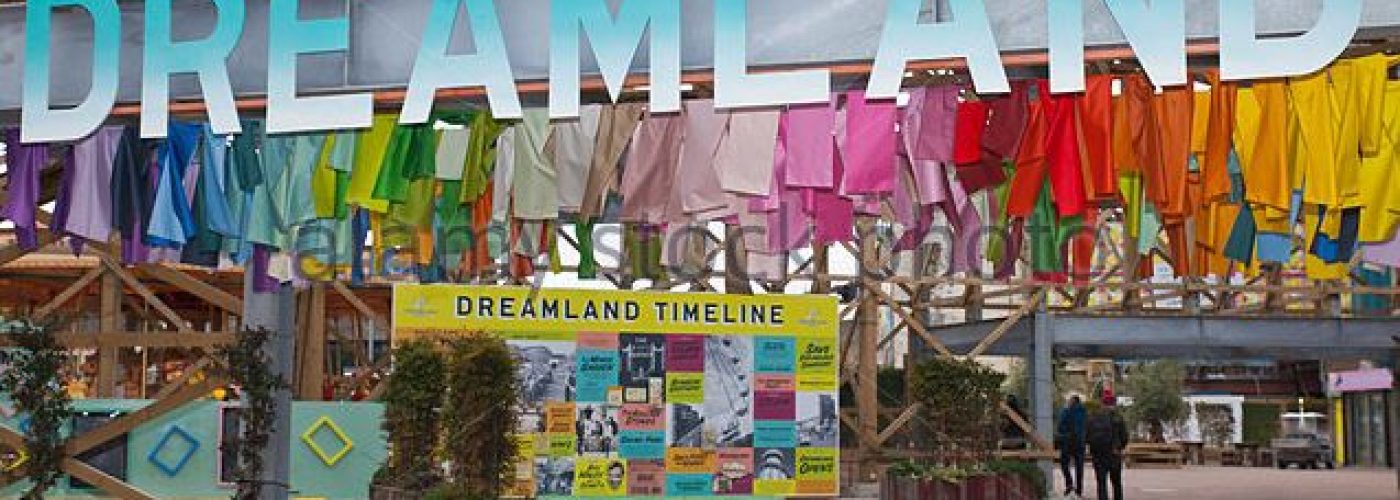The reconstruction of the 1920 vintage wooden rollercoaster, a hugely important piece of the Margate regeneration programme is completed.
Dreamland finally closed its doors in 2006 and now after many years of campaigning, this nostalgic vintage amusement park finally reopened this summer.
If Dreamland is to help breath life back into Margate, then the scenic railway will be the heart that makes it beat. Built in 1920 and damaged by fire in 2008, the wheels on the oldest wooden rollercoaster in the UK have now once again started to turn.
Topbond PLC, the Sittingboune based civil engineering specialists were given the task of reconstructing the structure that was Grade II listed in 2002 and Grade II* listed in 2011.
Topbond MD Glenn Springett says “It hasn’t been without its challenges. Constructing ‘like for like’ to maintain its Grade II listing whilst complying with current design standards naturally resulted in conflict. Working closely with English Heritage during the project we have overcome those challenges”.
The 14m high timber construction is not fixed to its new concrete foundations. Instead it sits on neoprene pads that will absorb shock loadings – gravity holds the structure in place. In all, there is 930m of track around the ride.
300 tons of Spruce will replace the existing softwood used, a very durable timber, which was sourced from Germany. The plantation was chosen for its fairly constant climate. The timber was sawn, then graded to C24 requirements before being shipped to the UK where it was double vacuum treated and checked for adequate penetration of the preserve.
A dynamic analysis was undertaken to provide the worse case loadings at each tressle location around the ride. This included loadings on both horizontal and vertical curves together with canting around the bends. This enabled Topbond to structurally analyse every timber component on the job. The geometry of the ride means that every support trestle is different, so each one had to be detailed separately.
John Riddle Topbond’s senior structures engineer said ‘I take my hat off to the original team that built this structure without the technology which is available to us today – It has certainly stood the test of time, being in daily use for most of its 90 years is testament to their engineering capability.’
Bolts have replaced nails to provide more secure fixings for all the bracing. There are in excess of 30,000 bolts used on the whole project.
The original train had a ‘Brake Man’ operating a brake to control the speed of the train that speeded up when raining and windy – It was also affected by the number and weight of the passengers. Current regulations will not allow total dependence on a brake man to control the speed, so magnetic brakes will be installed at strategic locations around the ride.
This scheme is a first for Topbond, who are delighted to have been involved with this fabulous re-creation of the original timber scenic railway structure.
Director of Community Services for Thanet District Council, Larissa Reed said: “We’re delighted that the Scenic Railway is open for the public to ride once again. Breathing new life into Britain’s oldest surviving rollercoaster has been an immense challenge, but the time, dedication and attention to detail taken by our contractors to replicate an authentic heritage experience has been worth the wait. I’m sure the sights and sounds of the iconic Scenic Railway will evoke many happy memories from the community who have been so passionate and patient with this journey. The launch marks another positive step forward in the continued regeneration of our original seaside town. A big thank you to our partners, the community and Topbond for helping this ambitious vision become a reality.”





